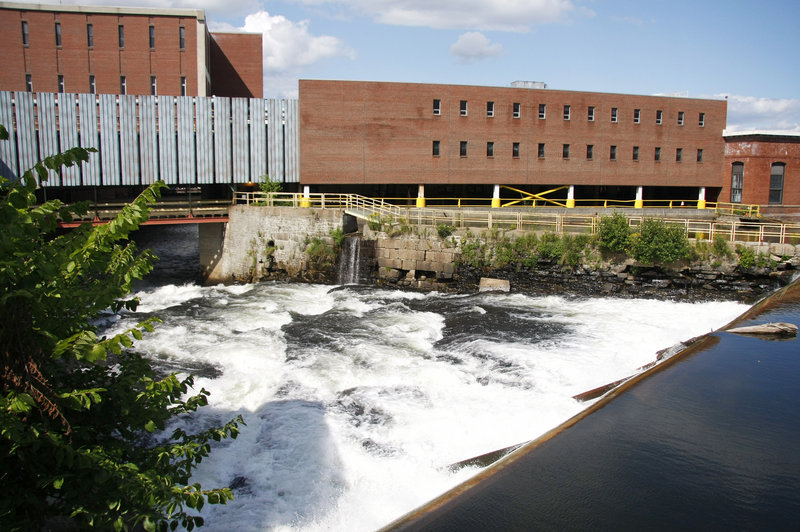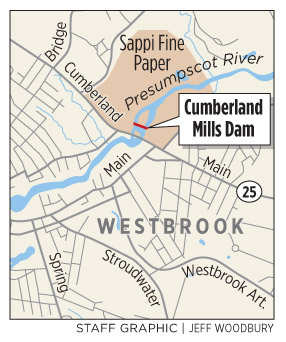WESTBROOK – The orange cones, neon vests and construction crane that can be seen from Cumberland Street might have little significance to most people driving by the Sappi Fine Paper mill.
For those involved in the 15-year fight for a fish passage on the Presumpscot River, it’s the first manifestation of a major victory toward restoring fish to the waterway.
“It’s very gratifying to see things starting to happen,” said Gail Wippelhauser, a scientist for the state Department of Marine Resources.
Two years ago, Inland Fisheries and Wildlife Commissioner Roland Martin ordered Sappi to build a fishway at its Cumberland Mills Dam. Construction started in June on the nearly $5 million, two-phase project that, by the spring of 2013, will enable fish to pass through the dam for the first time in more than 100 years.
In the project’s first phase, scheduled to be completed in the fall, construction crews will upgrade a series of underwater gates that slide open to let water pass through the dam, said Barry Stemm, Sappi’s engineering manager.
Old, leaky wooden gates will be replaced with tighter steel ones, which will give Sappi more control over water flow in the river.
The Presumpscot River splits into two channels at the Sappi mill. Only one of the channels will have a fishway.
In order to direct fish to the right channel, Sappi needs to have better control of the water flow.
“We want it to be successful,” said Stemm.
The construction of the fishway is the second phase of the project and is slated to be completed next summer. The passageway, called a fish ladder, will be a concrete ramp with baffles that slow the flow of water, allowing fish to swim up and over the dam, Stemm said.
After the Cumberland Mills Dam project is complete, Sappi has another two years to build a fishway at its next dam upstream, at Saccarappa Falls. Eventually, the company has to create passageways at its four dams beyond that. The timing of those projects will depend on how many fish start traveling the river.
The push for fish passage on the Presumpscot began in 1996, when the hydroelectric dams beyond Cumberland Mills, which are regulated by the Federal Energy Regulatory Commission, were up for relicensing, said Wippelhauser.
The Cumberland Mills Dam, which Sappi uses to collect water for its mill operations, is regulated by the state and not the federal government, because it’s not used for electricity.
Dusti Faucher, president of the Friends of the Presumpscot River, said she and others who have been involved in the battle since the beginning are planning to visit the construction site at the Sappi mill next month.
“There are still things that can go wrong, and we’re still being very vigilant to make sure there are no glitches,” she said.
Staff Writer Leslie Bridgers can be contacted at: 791-6364 or at
lbridgers@mainetoday.com
Send questions/comments to the editors.





Success. Please wait for the page to reload. If the page does not reload within 5 seconds, please refresh the page.
Enter your email and password to access comments.
Hi, to comment on stories you must . This profile is in addition to your subscription and website login.
Already have a commenting profile? .
Invalid username/password.
Please check your email to confirm and complete your registration.
Only subscribers are eligible to post comments. Please subscribe or login first for digital access. Here’s why.
Use the form below to reset your password. When you've submitted your account email, we will send an email with a reset code.